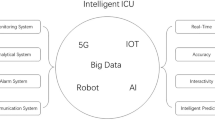Abstract
The present article covers an influence of the impact of electromagnetic interferences on computer information systems whose purpose is to control transport supervision systems. The primary objective of transport supervision systems is to detect hazards to human life and health that occur in the process of transport: traveling of people and/or cargos. This process needs to be characterized by a high level of reliability and safety. The measure of the transport safety is the confidence that the elements of a transport process will remain intact during its realization with the exception of those changes that are the result of the natural processes of aging and wear. The railway environment is one of the most difficult environments concerning the provision of electromagnetic compatibility. Those electromagnetic interferences that are intended and not intended being generated in a rail area have an impact on the operation process of a transport supervision system.











Similar content being viewed by others
References
Aniserowicz K (2005) The analysis of electromagnetic compatibility issues in large buildings exposed to lightning. Technical University of Białystok
Będkowski L, Dąbrowski T (2006) Operational basics, vol. II, basics of operational reliability. Military University of Technology, Warsaw
Choromański W, Dyduch J, Paś J (2011) Minimizing the impact of electromagnetic interference affecting the control system of personal rapid transit in the context of the competitiveness of the supply chain. Archives of Transport, Polish Academy of Sciences Index 201 901. ISSN: 0866-9546 vol 23, Issue 2. Warsaw, pp 137–152
Dobrowolski A, Tomczykiewicz K, Komur P (2007) Spectral analysis of motor unit action potentials. IEEE Trans Biomed Eng 54(12):2300–2302
Dobrowolski A, Tomczykiewicz K, Komur P (2007) Fourier analysis of motor unit action potentials. Electron Telecommun Q 53(2):127–141
Duer S (2009) Artificial neural network-based technique for operation process control of a technical object. Def Sci J 59(3):305–313
Duer S, Duer R (2010) Diagnostic system with an artificial neural network which determines a diagnostic information for the servicing of a reparable technical object. Neural Comput Appl 19(5):755–766
Duer S (2010) Expert knowledge base to support maintenance of a radar system. Def Sci J 60(5):531–540
Duer S (2011) Applications of an artificial intelligence for servicing of a technical object. Neural Comput Appl. doi:10.1007/s00521-011-0788-y
Duer S (2011) Assessment of the quality of decisions worked out by an artificial neural network which diagnoses a technical object. Neural Comput Appl. doi:10.1007/s00521-011-0725-0
Duer S (2011) Examination of the reliability of a technical object after its regeneration in a maintenance system with an artificial neural network. Neural Comput Appl. doi:10.1007/s00521-011-0723-2
Duer S (2011) Applications of an artificial intelligence for servicing of a technical object. Neural Comput Appl. doi:10.1007/s00521-011-0788-y
Rosiński A (2012) Reliability analysis of the electronic protection systems with mixed m–branches reliability structure. In: Berenguer, Grall, Guedes Soares (eds) Advances in safety, reliability and risk management. Taylor & Francis Group, London
Rosiński A (2008) Design of the electronic protection systems with utilization of the method of analysis of reliability structures. In: Nineteenth international conference on systems engineering (ICSEng 2008), Las Vegas, USA
Rosiński A (2010) Reliability analysis of the electronic protection systems with mixed—three branches reliability structure. In: Bris R, Guedes Soares C, Martorell S (eds) Reliability, risk and safety. Theory and applications, vol 3. CRC Press/Balkema, London
Acknowledgments
This work is supported by the Polish Ministry of Science and Higher Education in the years 2010–2012 as a development project.
Author information
Authors and Affiliations
Corresponding author
Rights and permissions
About this article
Cite this article
Paś, J., Duer, S. Determination of the impact indicators of electromagnetic interferences on computer information systems. Neural Comput & Applic 23, 2143–2157 (2013). https://doi.org/10.1007/s00521-012-1165-1
Received:
Accepted:
Published:
Issue Date:
DOI: https://doi.org/10.1007/s00521-012-1165-1




